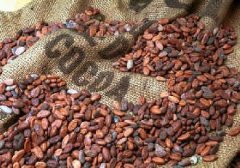Five common preservation methods of coffee beans
Roasted coffee beans are easily exposed to oxygen in the air to produce oxidation, which deteriorates the oil quality, volatilizes and disappears aroma, and then accelerates deterioration through temperature, humidity, sunshine and so on. Especially after multi-layer treatment of low-caffeine coffee beans, oxidation is carried out faster. Therefore, in order to maintain the aroma and quality of coffee, how to package and preserve coffee beans has become a great knowledge. Coffee beans produce a lot of carbon dioxide after roasting, so the packaging of coffee should not only avoid contact with air oxidation, but also deal with the carbon dioxide produced by coffee beans.

Coffee beans can be preserved in the following ways:
1. Gas-containing packaging.
In the most common packaging, beans and powder are packed in glass cans, paper bags or plastic containers, and then capped or sealed. Low preservation, and because of contact with air all the time, need to drink as soon as possible, drinking period is about a week.
2. Vacuum packing.
The packing container (can, aluminum foil bag, plastic bag) draws out the air from the container after filling the coffee. Although it is called a vacuum, it actually removes up to 90% of the air and is not suitable for preserving coffee powder.
3. Gas filling packaging.
A pinhole is designed on the metal bag. After filling the coffee, inactive nitrogen is poured into the bag and the carbon dioxide in the bag is squeezed out of the pinhole. This method is more popular, but after all the gas is discharged, part of the air will be drilled back into the human bag from the pinhole.
4. Packing of gas absorbent.
When the absorbent made from deoxidizer and decarbonization is put into the bag, the air in the package can be easily absorbed, and the carbonation produced by the coffee can also be absorbed, but its disadvantage is that the aroma of the coffee will also be absorbed.
5. UCC Euro packing.
This is the most ideal outer packaging of coffee at present, all in the form of beans rather than powder. It is similar to the pinhole metal bag, except that the gas in the bag can be discharged through the pinhole, while the unidirectional piston can prevent the air from entering the bag. Immediately after the beans are roasted, the coffee manufacturers cool and pack the beans and pour nitrogen into the bag to discharge the gas from the bag. Although this kind of packaging is the most ideal, but the material is expensive and the cost is high. At present, only selected coffee from large companies will use this packaging method.
Important Notice :
前街咖啡 FrontStreet Coffee has moved to new addredd:
FrontStreet Coffee Address: 315,Donghua East Road,GuangZhou
Tel:020 38364473
- Prev

The roasting method of coffee roasting
Coffee will be addicted to love, the key lies in the formation of the aroma after baking and the taste of drinking.
- Next

There are 8 kinds of coffee beans baked
1. Low-temperature baking light roast11min caffeine, sour taste, many for direct drinking. two。 The root of cinnamon roast12min baked with cinnamon is the same as above. 3. Medium roast15min roasted at medium temperature is refreshing and suitable for American coffee. 4. High temperature baking high roast17min picric acid balance, common mouth and stomach. 5. City roasted city roast18min espresso is sour. six
Related
- Beginners will see the "Coffee pull flower" guide!
- What is the difference between ice blog purified milk and ordinary milk coffee?
- Why is the Philippines the largest producer of crops in Liberia?
- For coffee extraction, should the fine powder be retained?
- How does extracted espresso fill pressed powder? How much strength does it take to press the powder?
- How to make jasmine cold extract coffee? Is the jasmine + latte good?
- Will this little toy really make the coffee taste better? How does Lily Drip affect coffee extraction?
- Will the action of slapping the filter cup also affect coffee extraction?
- What's the difference between powder-to-water ratio and powder-to-liquid ratio?
- What is the Ethiopian local species? What does it have to do with Heirloom native species?

